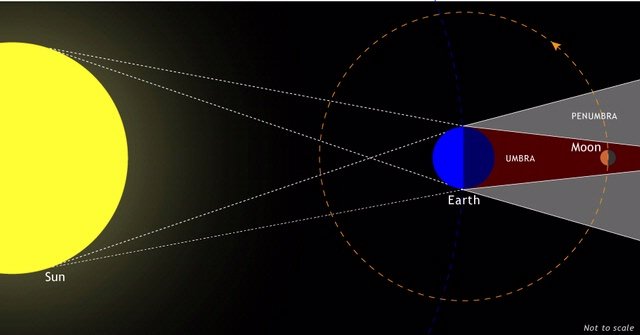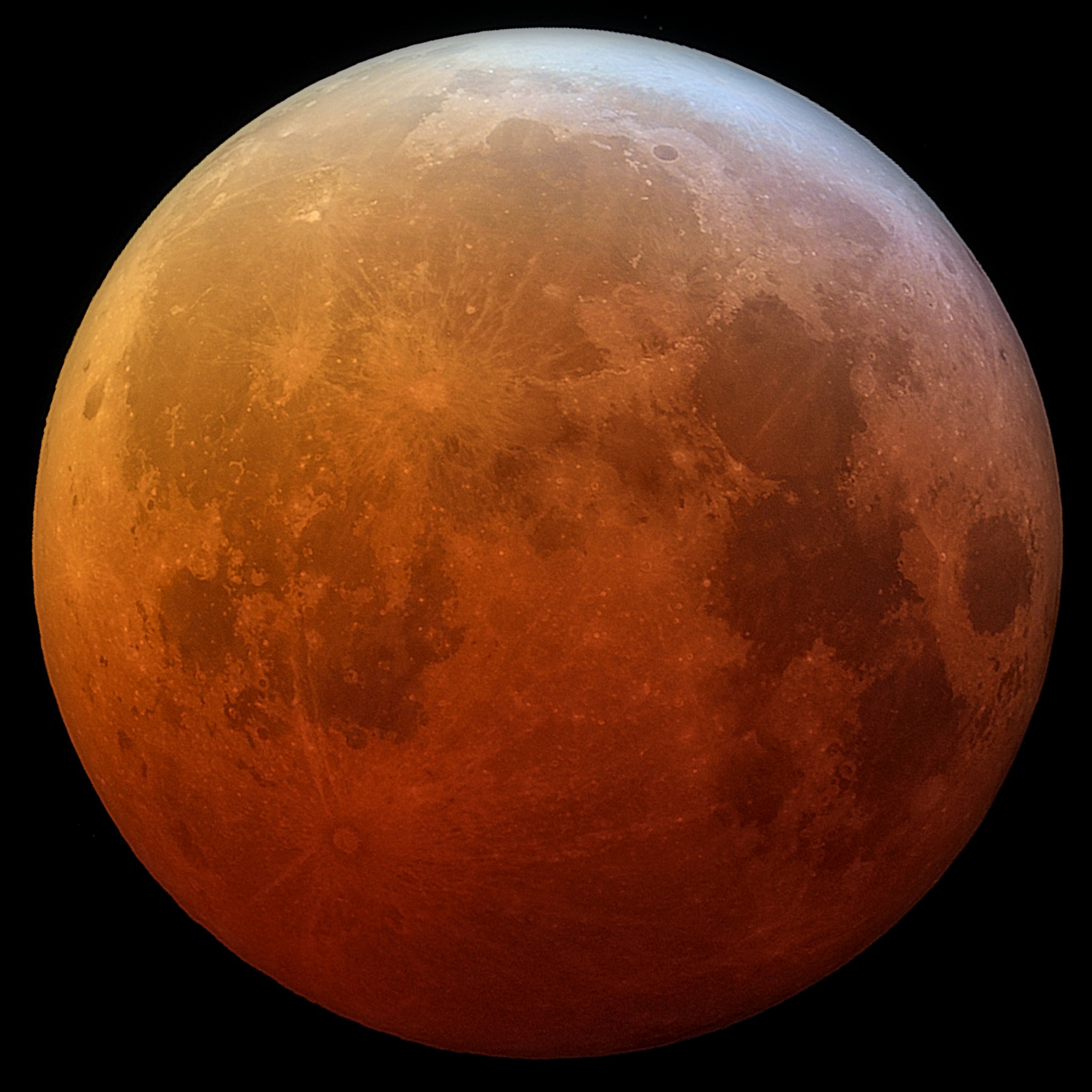Set your alarms and hope for clear skies in the early morning hours of November 8 to see a total lunar eclipse! There will also be two bright passes of the ISS this morning. Get the details here.
Total lunar eclipses, or "Blood Moons," occur when the Earth passes between the Moon and Sun, casting its shadow on the surface of the Moon. If you were observing the eclipse from the surface of the Moon, you would see a total solar eclipse!
Every shadow has two parts: the umbra and the penumbra. The penumbra can be seen as the light "fuzzy" edges surrounding the darker, umbral shadow.

Image credit: Smithsonian Institution
The term blood moon is not an official term in astronomy. It comes from the reddish-orange color the Moon turns as it enters Earth's umbral shadow. Sunlight can pass through Earth's atmosphere but gets scattered and bent due to all the dust and water vapor in our air. This bending changes the light's color from yellow/white to a bloody orange/red color that gets reflected on the Moon during a total eclipse. This same bending of light is why sunsets on Earth appear red. The more dust and water vapor the light passes through, the darker red the Sun will appear.
Unlike solar eclipses, lunar eclipses are always safe to watch and don't require special equipment, but telescopes and binoculars can enhance the view. The Moon will enter Earth's fainter penumbral shadow around 3 am. Just after 4 am, the Moon will enter the darker umbral shadow. At 5:15 am, the Moon will be fully eclipsed. The total eclipse will end at 6:41 am and set shortly after at 6:44 am. The Moon will be close to the horizon during totality, so make sure you have a clear view of the horizon in the west-northwest.

Photo credit: Giuseppe Donatiello from Oria (Brindisi), Italy, CC0, via Wikimedia Commons
| Event | Time |
| Penumbral eclipse begins | 3:02 am |
| Partial eclipse begins | 4:09 am |
| Full eclipse begins | 5:16 am |
| Maximum eclipse | 5:59 am |
| Full eclipse ends | 6:41 am |
| Moonset | 6:43 am |
We'd love to see your photos of the eclipse! Please share them with us on Facebook and Twitter, @RUPlanetarium.